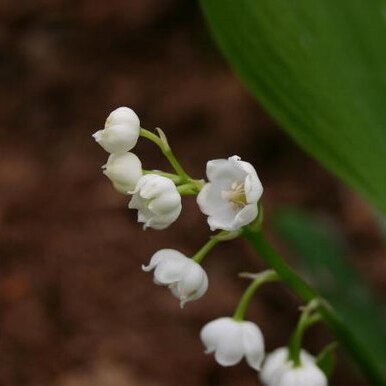Herbs perennial, rhizomatous. Rhizome short, with 1 or 2 creeping stolons. Roots rather slender. Leaves 2(or 3), basal, long petiolate; petiole erect, equitant, forming a pseudostem, proximally enveloped by several cylindric, membranous sheaths. Scape arising from a sheath axil, naked. Inflorescence a terminal raceme, laxly few to many flowered, 1-sided; bracts membranous, caducous. Flowers bisexual, nodding, long pedicellate. Perianth broadly campanulate; segments connate to form a tube; lobes very short. Stamens 6, inserted at base of perianth tube, included; filaments short; anthers basifixed. Ovary ovoid-globose, 3-loculed; ovules several per locule. Style long; stigma small. Fruit a berry. Seeds several, small.
Fls perfect; tep united into a globose-campanulate perianth with 6 short recurved lobes; stamens 6; filaments short, inserted on the perianth near its base; ovary with several ovules in each of the 3 locules; style straight, included; stigma scarcely lobed; fr a many-seeded berry; rhizomatous herb, the short stem bearing a few lfless sheaths and 2 or 3 broad lvs, the scape terminating in a bracteate raceme. Monotypic.

